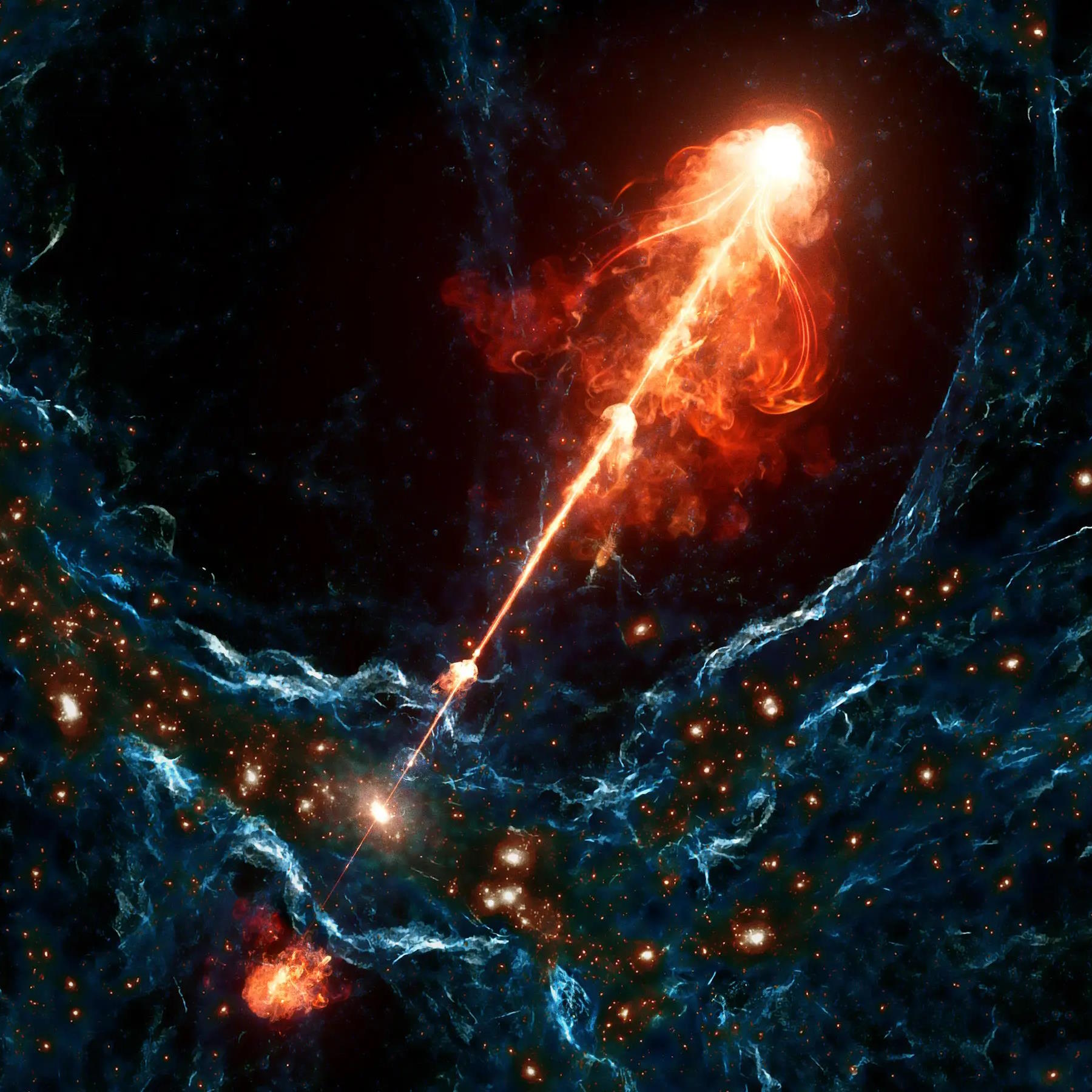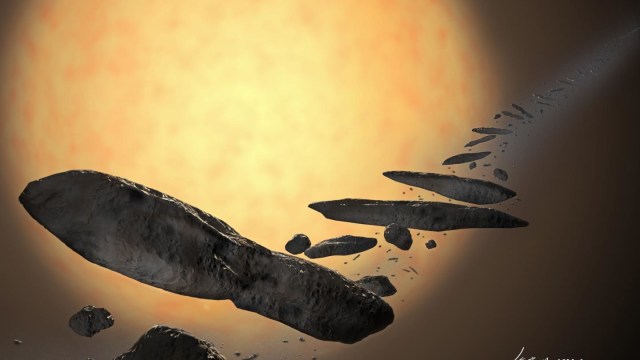Beyond The Black Hole: Event Horizon Telescope Solves A Quasar Mystery We Didn’t Know Existed
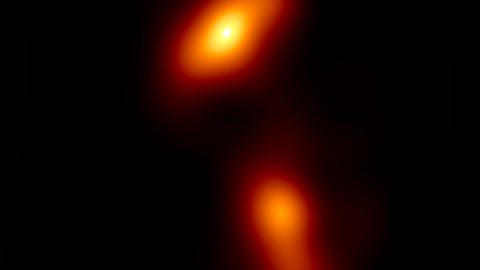
When you look at the Universe in an entirely new way, you sometimes find what you could never have anticipated.
Almost exactly one year ago today, the Event Horizon Telescope collaboration released the first-ever image of a black hole’s event horizon. Its publication marked the first time that we’d ever directly detected a region of space where so much matter was concentrated into such a tiny volume that nothing, not even light, could escape from it.
During that same observing campaign, which took place simultaneously across eight different astronomical observatories on Earth, a number of other targets were also imaged, including the quasar 3C 279. With the unprecedented resolution of the Event Horizon Telescope, the origin of this incredibly powerful cosmic jet was revealed for the first time. Although it agrees with what was theoretically predicted, the details are spectacular in an entirely new way.
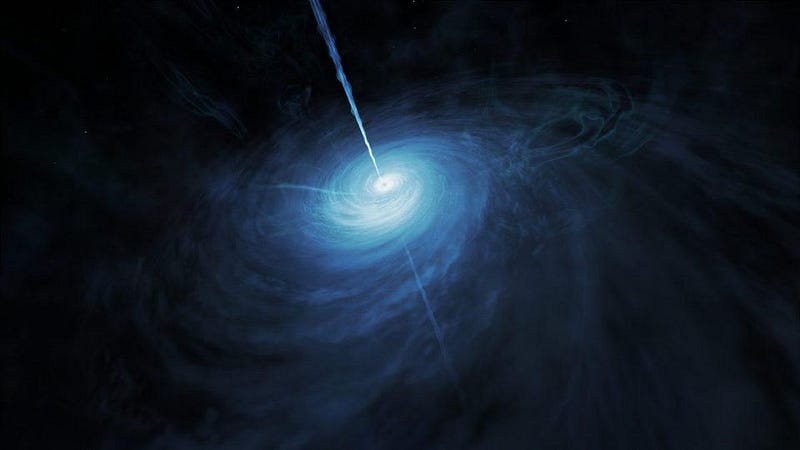
When they were first discovered, quasars were incredibly mysterious objects. Even the name quasars was formed as an acronym: Quasi-Stellar Radio Sources (QSRS), since they emitted enormous amounts of energies, but only at radio frequencies. The earliest quasars were entirely invisible in other wavelengths of light, but were among the most energetic radio sources in the Universe.
As our observational tools improved, telescopes began revealing galaxies — sometimes faint, sometimes very distant — that hosted these quasars. They consisted of a galactic center with bright jets of radiation emitted from them. Nearby ones with clearly visible galaxies became known as Active Galactic Nuclei (AGNs); ones with their jets pointed at us were known as blazars (BL Lacertae objects). Today, they’re all known to be the same class of astronomical phenomenon.
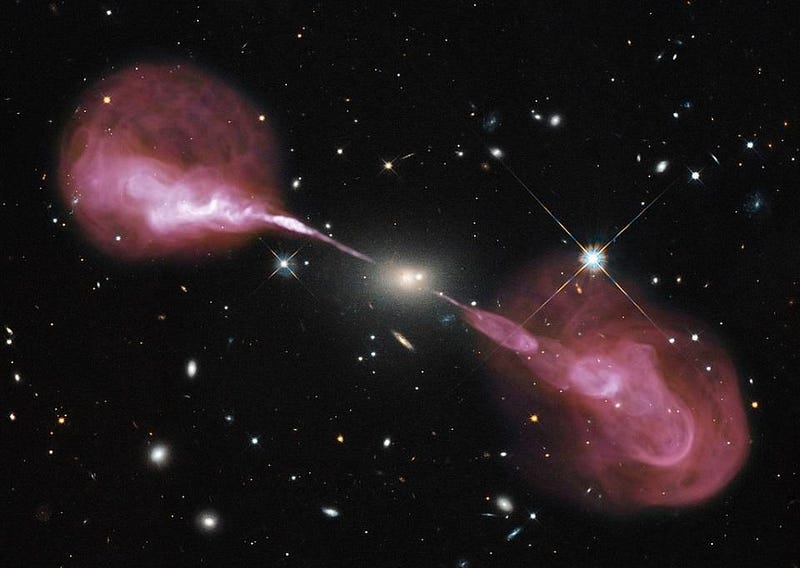
What we think is happening with each and every one of these is that there should be a supermassive black hole at the centers of these galaxies, and that the ones that appear as quasars, AGNs, or blazars are all in the process of actively feeding on matter. They should have accretion disks and flows of matter that get accelerated (but only partially devoured) by the supermassive black hole, with much of that infalling matter ejected in these ultra-powerful jets.
One of the long-held goals of radio astronomy is to increase the resolution of our observations of these quasar jets in the region around the central black hole, in the hopes of understanding exactly what physical processes are driving the creation of this ultra-high luminosity radiation. With the advent of the Event Horizon Telescope, there’s no better tool for the job.
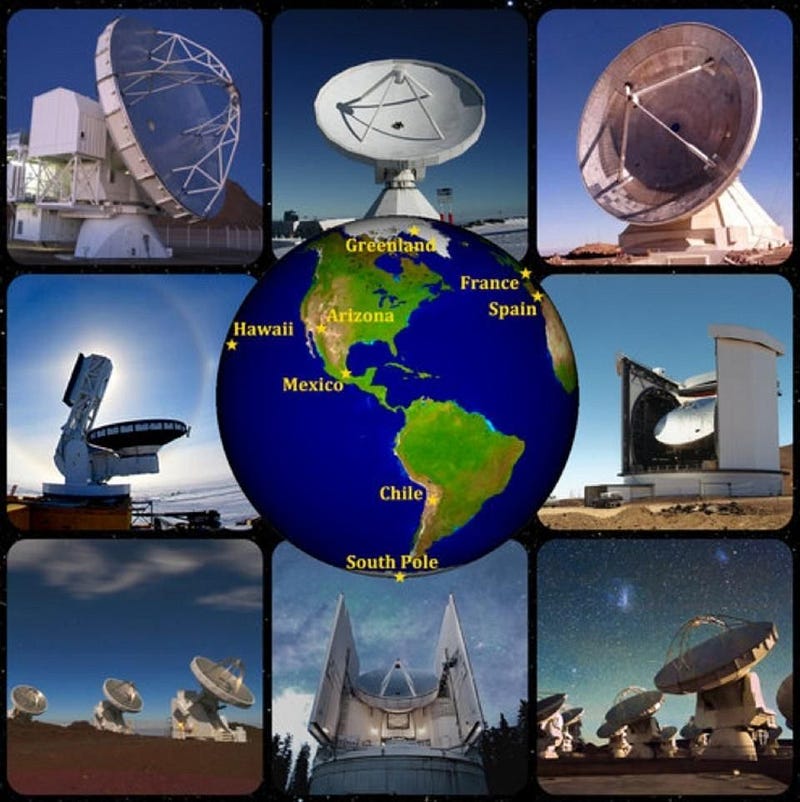
The Event Horizon Telescope itself isn’t a single telescope or even a single array of telescopes, but rather an assembly of eight different observatories. Some of them are large, single-dish radio telescopes; others are large arrays of telescopes, with the most extensive and comprehensive being the Atacama Large Millimetre/sub-millimetre Array (ALMA), itself consisting of 66 individual telescopes.
All of these telescopes are synchronized to one another with atomic clocks, which enables their observations to be combined with one another. When the Event Horizon Telescope operates at perfect efficiency — when atmospheric effects are minimized, when the data is clean, when all sources of error can be ignored or subtracted out — it behaves like a single telescope whose:
- light-gathering power is determined by the combined area of all telescope components combined,
- but whose resolution is determined by the distance between the telescopes, up to the diameter of planet Earth.
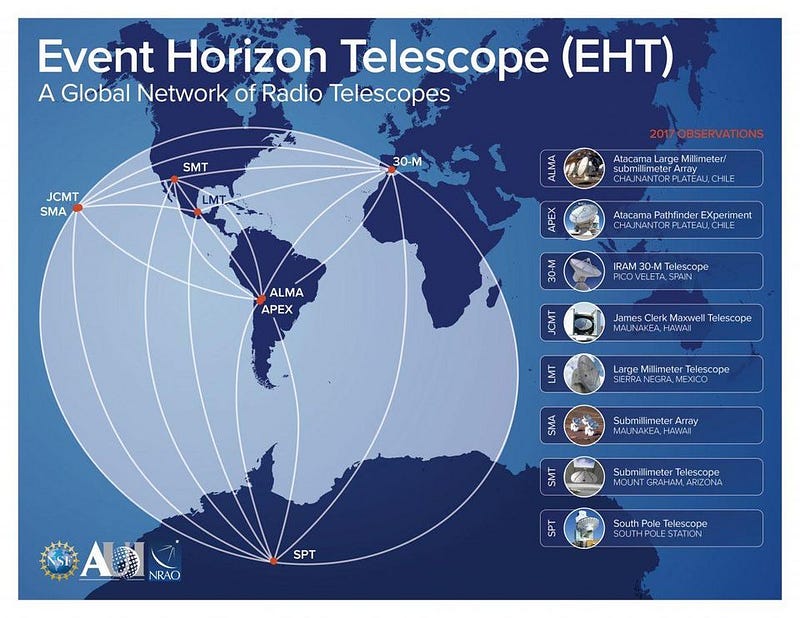
That last part — resolution — is what makes the Event Horizon Telescope so uniquely powerful. There are 360 degrees in a circle, 60 arc-minutes in each degree, and 60 arc-seconds in each arc-minute. The unaided human eye can see down to resolutions of about 1 arc-minute; an ultra-powerful observatory like the Hubble Space Telescope can get down to about a tenth of an arc-second.
In general, resolution is determined by the number of wavelengths of light (at whatever wavelength you’re using) can fit across the diameter of your telescope. Even though radio waves are far longer than the optical wavelengths our eyes (and Hubble) are sensitive to, the diameter of the Earth is so much larger than any mirror that the Event Horizon Telescope can resolve features as small as a few dozen micro-arc-seconds, well over 1,000 times more sensitive than what Hubble can see.
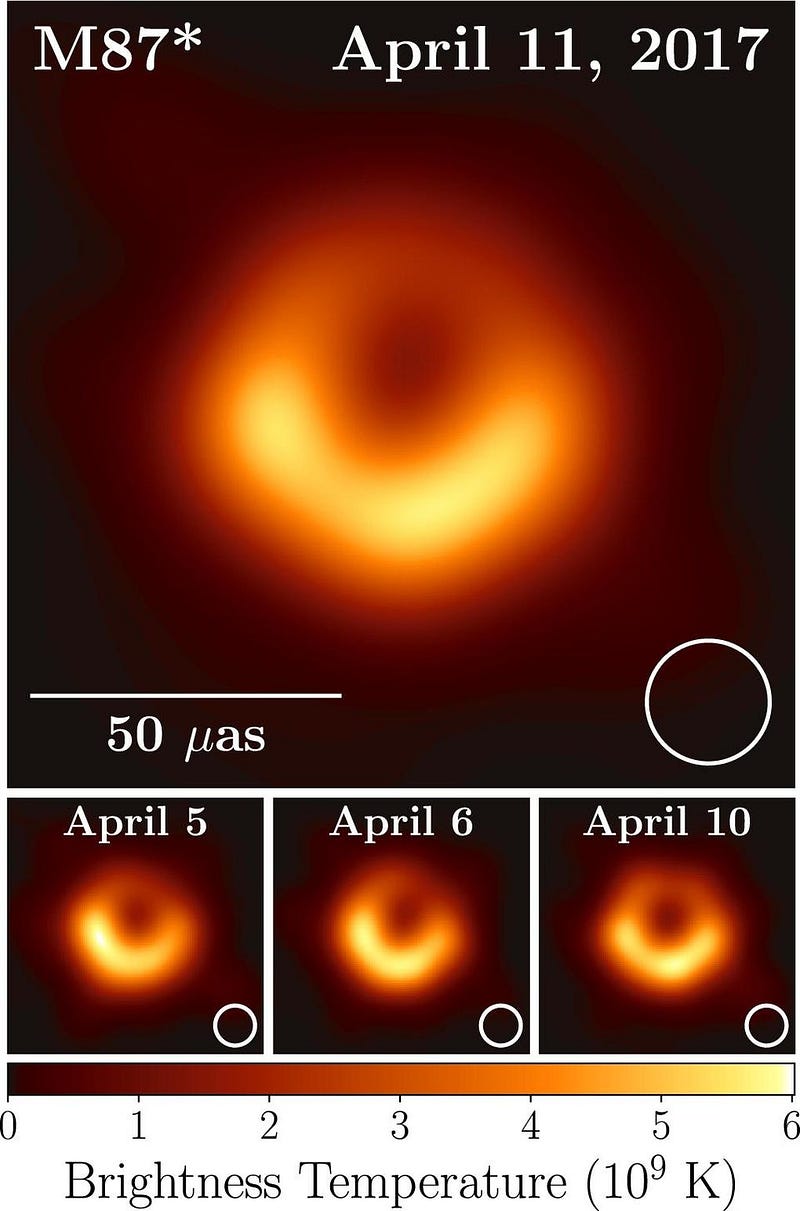
In 2019, when the first iconic image of the supermassive black hole at the galaxy Messier 87’s core was released, a set of images of the central region of the quasar 3C 279, located some 5 billion light-years away, were also released. Taken during the same observing run that led to our first-ever image of an event horizon, these images were the first to reveal two separate “blobs” of light in this quasar’s core.
These are enormously important for understanding what’s going on. The orange light towards the bottom of the image is the start of one of the two jets of matter commonly seen around quasars, originating from a black hole whose mass is estimated to be around one billion times greater than that of our Sun. But from some 5 billion light-years away, we can see that upper blob, independent from the lower one, to resolutions of less than half-a-light-year across.
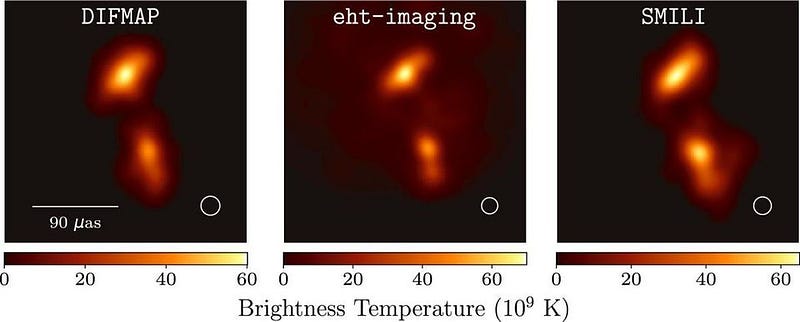
What we’re seeing, for the very first time, is the accretion disk around an active black hole. That upper blob, as imaged by the event horizon telescope, shows that there’s a twisted shape to the jet at its base, and also shows features that are apparently perpendicular to the jet itself.
The preliminary interpretation of those perpendicular features could be showing the accretion disk, with the jets being ejected from the poles of that disk. This is remarkable for two reasons.
- This is exactly what theoretical models of quasars have been predicting for many years, but telescope technology has never yet (until now) advanced to the point where it could confirm, refute, or test this at all.
- Based on the size of the black hole, we should expect to see time-variations in these electromagnetic features on the timescale of a few hours, and the multiple images taken on multiple days do indeed show those time-variations, previously only seen in numerical simulations.
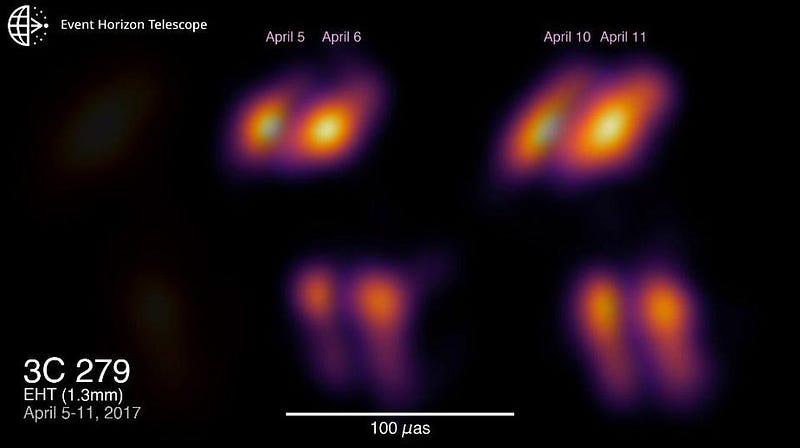
What’s even more remarkable is that scientists can track the motion of these jets, spatially, over time, which ought to correspond to the motions of individual electrons. The speed of these electrons should be limited by the speed of light, and yet this jet appears to propagate at about 20 times the speed of light, a challenge for that idea. Thomas Krichbaum, Principal Investigator of this project, was very excited about this mystery:
Motion in [the] transverse jet direction is difficult to reconcile with the simple understanding of an outward propagating relativistic jet. This suggests the presence of propagating plasma instabilities in a bent jet or internal jet rotation. 3C 279 was the first source in astronomy to show superluminal motions, and today, almost fifty years later, still has some surprises for us.
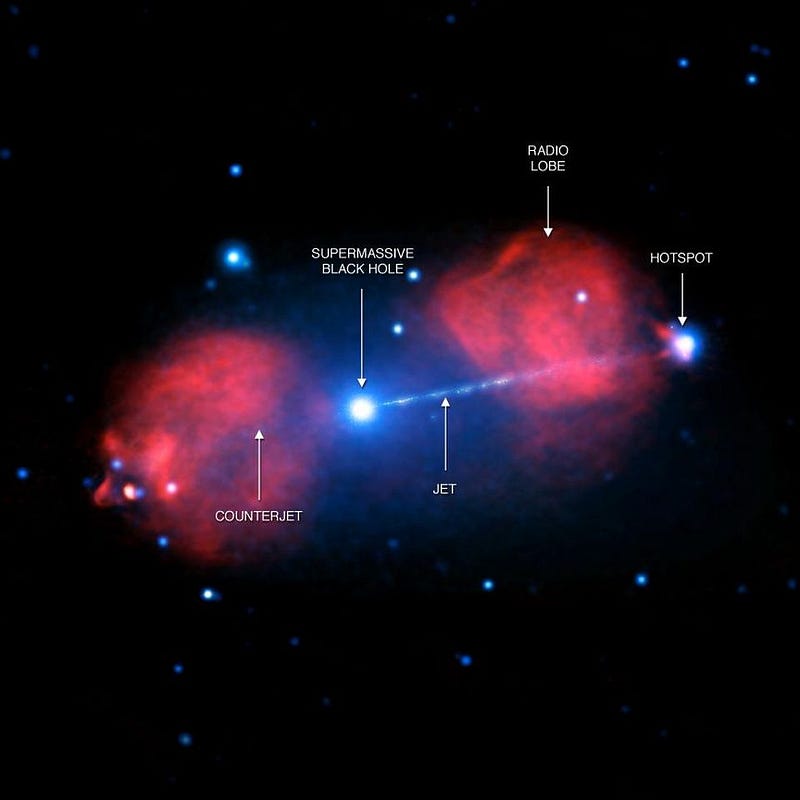
The “superluminal motions” might just be an optical illusion, but understanding why there’s this perpendicular structure reveals an even deeper puzzle for scientists to figure out. Accretion disks around supermassive black holes have never been imaged like this before, and if that’s what we’re truly seeing here, then this first one ever will likely be our cosmic “Rosetta Stone” for uncovering this momentous link between the black hole powering this quasar and the jet we see flowing out from them.
The Event Horizon Telescope was hoping to engage in another observing campaign this year, during March and April, but the ongoing COVID-19 pandemic has forced its cancellation. However, data from the 2017 and the enhanced 2018 is currently being analyzed, and an expanded Event Horizon Telescope campaign, featuring a total of 11 independent observatories, is slated for March of 2021.
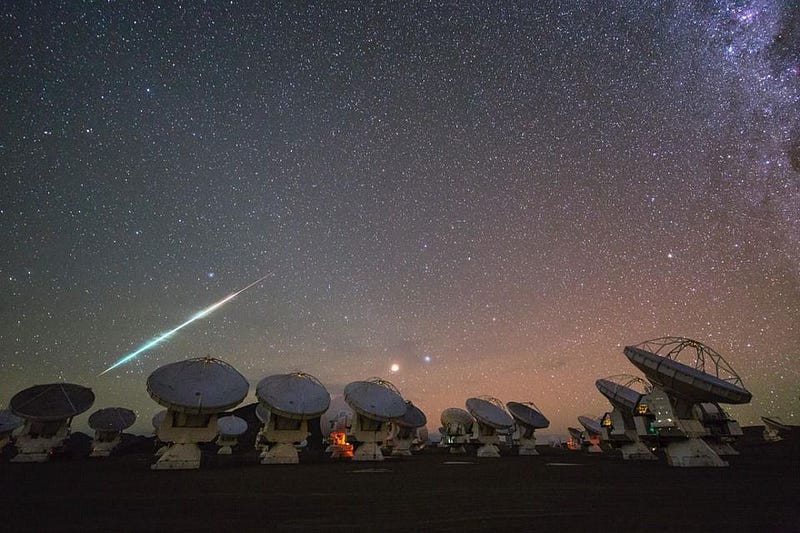
A year ago, humanity got a glimpse of our first event horizon ever, by looking at the largest supermassive black hole in the relatively nearby Universe. But ~100 times farther away, an ultra-powerful, highly variable quasar was holding onto its own secrets, and the Event Horizon Telescope was able to uncover many of them as well. Although it remains to be confirmed, it’s possible that we’ve just seen an image of a quasar’s active accretion disk for the first time.
Massive astronomy projects like the Event Horizon Telescope would be wholly impossible without worldwide collaboration and the commitment of planet Earth to the funding of basic scientific endeavors. By looking at the Universe with eyes like never before, we can uncover and solve mysteries that we would never have known even existed otherwise. This latest discovery serves as a spectacular example of what pushing the frontiers of known science can ultimately reveal.
Ethan Siegel is the author of Beyond the Galaxy and Treknology. You can pre-order his third book, currently in development: the Encyclopaedia Cosmologica.


